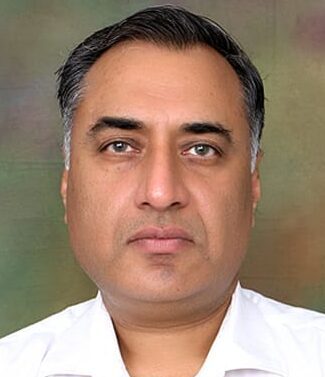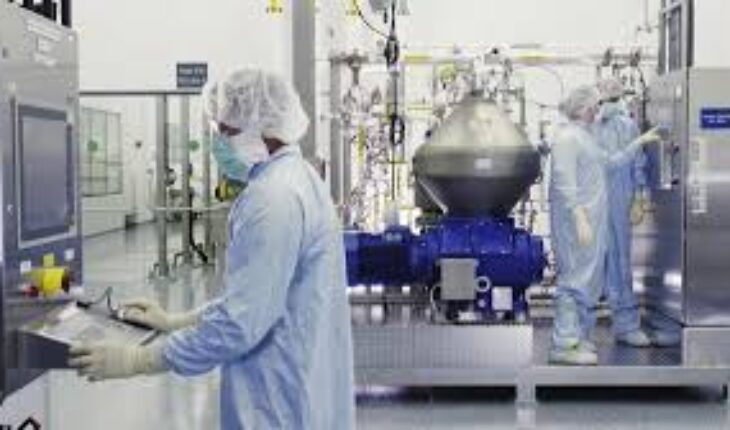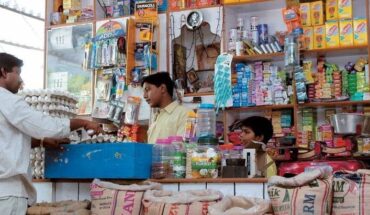
Dr. Anil Kumar Angrish

Ajay Sham Pawar
Biocon Chairperson Kiran Mazumdar-Shaw called for more investment in Research and Development (R&D) so as to drive innovation while addressing Global Bio-India 2024 event on September 12, 2024. R&D is a key component of slogan of new India – ‘Jai Jawan, Jai Kisan, Jai Vigyan, Jai Anusandhan’ of which ‘Jai Anusandhan’ was added by Prime Minister Modi in his speech during Indian Science Congress 2019, ‘Jai Vigyan’ was added by Atal Bihari Vajpayee and ‘Jai Jawan, Jai Kisan’ was the slogan given by Lal Bahadur Shastri. In pharmaceutical sector, R&D results into creation of new drugs and technologies. It is through investment in R&D that Indian pharmaceutical companies can grow in value terms as Indian pharmaceutical industry has established itself as one of the largest pharmaceutical manufacturers of generic drugs.
Multiple studies have shown that R&D expenditure has positive impact on the financial performance of pharmaceutical companies. In financial literature, cost accounting textbooks, R&D is still treated as a ‘discretionary expense’, i.e., the cost which can be curtailed or eliminated altogether in the short-run without affecting current revenues, and this cost is not tied to operations. But in pharmaceutical sector, new drugs or innovative products, or innovative technologies do not come up in short-run, and require consistent efforts for long-term. Current revenue for R&D intensive pharmaceutical companies is attributed to their past R&D expenditure and efforts. A Lancet study (August 2024) based on examination of 81 projects found that the median development time from first-in-human study initiation to obtaining marketing authorisation was 7.3 years.
Role of R&D expenditure in innovations and IP creation is recognized by companies across the sectors, e.g., Sindhu Gangadharan, MD & Head of Customer Innovation Services, SAP Labs India recently stated that India is the largest R&D hub outside of their headquarters, and approximately 40% of their global R&D workforce is based in India, developing innovations for the world. In terms of creation of Intellectual Property (IP) of the global patents filed by SAP originate from SAP Labs India. Pharmaceutical sector is not an exception.
R&D expenditure of top pharmaceutical companies in India in last five years shows a positive trend in absolute rupee terms but it is not consistent if we observe R&D expenditure as a percentage of total revenue of these companies. Of course, there are multiple factors which affect R&D expenditure, e.g., increase in revenue, company’s priorities, tax incentives for investment in R&D, etc. R&D spending in absolute rupee terms and as a percentage of total revenue are considered key measures when we see long-term play. Many persons attribute low R&D expenditure to ‘trader mentality’ as a cultural phenomenon too. It is also relevant to note that Indian pharmaceutical companies are relatively small if we compare these companies with their global counterparts. Top Indian pharmaceutical firms invest less than 10 per cent of sales in R&D whereas this percentage is in mid-teens for top global pharmaceutical companies.
Sun Pharma which holds numero uno position in Indian pharmaceutical industry spent Rs. 22,489 mn in 2017-18 and for next four years, amount spend on R&D was below that level, i.e., Rs. 19,847 mn in 2018-19, Rs. 19,736 mn in 2019-20, Rs. 21,499 mn in 2021-22, and Rs. 22,194 mn in 2022-23. Decline in R&D expenditure can be attributed to pandemic for about two years. In 2022-23, R&D expenditure has crossed the level of 2017-18 for the company. Increase in R&D expenditure was not even sufficient to factor the inflation during this period. R&D expenditure as a percentage of total revenue in 2022-23 became 5.5 per cent in comparison to 8.6 per cent in 2017-18.
Similar trend is visible for Cipla which spent Rs. 17,040 Mn in 2017-18 and till 2022-23, it could not touch that level. R&D expenditure in 2018-2019 was Rs. 17,040 mn, Rs. 11,750 mn in 2019-20, Rs. 9,240 mn in 2020-21, Rs. 11,220 in 2021-22, and Rs. 13,440 in 2022-23. R&D expense as a percentage of total revenue exhibited a downward trend. In percentage terms, it stood 7.1 per cent in 2017-2018, and increased to 7.4 per cent in 2018-19 but declined thereafter for three years, thereby touching 6.9 per cent in 2019-2020, 4.82 per cent in 2020-21, and 4.83 per cent in 2021-22. Marginal increase was there in 2022-23 when it touched 5.16 per cent.
The trend becomes a concern when top pharmaceutical companies are not able to maintain consistency in R&D expense in absolute rupee terms by considering inflation factor as well as R&D expenditure as a percentage of total revenue. Top ten pharmaceutical companies based on the market capitalization as of March 2024 were: Sun Pharmaceutical Industries, Cipla, Divi’s Labs, Zydus Lifesciences, Dr. Reddy’s Labs, Torrent Pharma, Lupin, Aurobindo Pharma, Alkem Labs, and Ipca Labs. Hence, observing their R&D expenditure pattern is relevant to the context.
For Divi’s Labs, R&D expenditure in rupee terms has shown upward trend in last five years. In 2018-19, R&D expenditure was Rs. 379.4 mn which went up to Rs. 394.5 mn in 2019-20, Rs. 512.6 mn in 2020-21, Rs. 590.5 mn in 2021-22, and Rs. 693.4 mn in 2022-23. But R&D expenditure as a percentage of total revenue showed a decline from 1.12 per cent in 2017-18, 0.78 per cent in 2018-19, and going down to 0.66 per cent in 2021-22. It has increased to 0.91 per cent in 2022-23 but it is still less than the level that the company had in 2017-18 at 1.12 per cent.
Zydus Lifesciences spent Rs. 6.900 mn in R&D during 2017-18 which increased to Rs. 7,482 mn in 2018-2019, Rs. 8,501 mn in 2019-20, and touched Rs. 9,184 mn in 2020-21. In 2021-22, it declined to Rs. 8,346 mn, and further declined to Rs. 8,148 mn in 2022-23. Similar trend is reflected in the R&D expenditure as a percent of total revenue which was 5.71 per cent in 2017-18, 5.91 per cent in 2019-20, 6.06 per cent in 2020-21. In 2021-22, R&D expenditure as a percentage of revenue stood at 5.44 per cent, and further declined to 4.67 per cent in 2022-23.
Dr. Reddy’s Labs has shown positive trend in R&D expenditure over a period of four years. The company spent Rs. 15,410 mn in 2019-20, Rs. 16,541 mn in 2020-21, Rs. 17,482 mn in 2021-22, and Rs. 19,381 mn in 2022-23. For DRL too, R&D expenditure was Rs. 18,265 mn in 2017-18 which showed decline in 2018-19 to Rs. 15,607. R&D expenditure as a percentage of revenue for DRL has consistently gone down from 12.9 per cent in 2017-18 to 10.1 per cent in 2018-19, 8.7 per cent in 2020-21, 8.2 per cent in 2021-22 to 7.9 per cent in 2022-23.
For Torrent Pharma, R&D expenditure went up to Rs. 4,149.6 mn in 2022-23 from Rs. 3,693.2 mn in 2017-18. For two years, there was increase in R&D expenditure in comparison to previous year. In 2018-19, it went up to Rs. 3,980.8 mn from Rs. 3,693.2 mn. Then there was decline for 2019-20, and 2020-21. In 2021-22, there was increase in R&D expenditure when it touched the level of Rs. 4,299.8 mn. In 2022-23, there was decline in comparison to 2021-22. R&D expenditure also declined as a percentage of revenue from 8.92 per cent in 2017-18 to just 5.5 per cent in 2022-23. In percentage, R&D expenditure decline from 2017-18 onwards except for 2021-22 when it went up to 6.45 per cent.
For Lupin, there was decline in R&D expenditure in absolute rupee terms as well as in percentage terms. R&D expenditure declined from Rs. 17,749 mn in 2017-18 to Rs. 12,800 mn in 2022-23. R&D expenditure as a percentage of revenue declined from 13.1 per cent in 2017-18 to 7.9 per cent in 2022-23. In Aurobindo Pharma, R&D expenditure has gone up from Rs. 6,490 mn to Rs. 14,115 mn in 2022-23. Substantial increase was visible in 2020-21 when R&D expense increased to Rs. 15,096 mn from Rs. 7,616 mn in 2019-20. R&D expenditure as a percentage of total revenue went up to 6.7 per cent in 2021-22 but declined to 5.7 per cent in 2022-23.
For Alkem Labs, R&D expenditure increased from Rs. 3,646 mn in 2017-18 to Rs. 5,674 mn in 2021-22. From 2017-18 to 2021-22, there was upward trend, and marginal decline was there in 2022-23 when R&D expenditure declined to Rs. 5,394 mn. R&D expenditure as a percentage of total revenue remained in the range of 5.3 per cent to 6.3 per cent from 2017-18 to 2021-22 and it declined to 4.7 per cent in 2022-23 as it declined in absolute rupee terms too. For Ipca Labs, R&D expenditure increased from Rs. 893.5 mn in 2018-19 to Rs. 1,564.9 mn. There was decline in 2018-19 in comparison to 2017-18. Similar trend was visible for R&D expenditure as a percentage of total revenue which stood at 3.73 per cent in 2017-18, went down to 2.5 per cent in 2018-19, and stood at 2.71 per cent in 2022-23.
Changes in R&D expenditure can be attributed to reduction of the weighted deduction from 200% to 150% from the financial year 2017-18 to FY2019-20, and then from the FY2020-21, the deduction was restricted to 100%. But increase in R&D expenditure by Indian pharmaceutical companies over a period of five years shows that these companies are realizing that research allows them rewards of the invention and innovation. Still Indian pharmaceutical companies have miles to go when seen in the background of R&D expenditure.
Dr. Anil Kumar Angrish- Associate Professor (Finance and Accounting),Department of Pharmaceutical Management, NIPER S.A.S. Nagar (Mohali), Punjab
Ajay Sham Pawar- MBA (Pharm.), Department of Pharmaceutical Management, NIPER S.A.S. Nagar (Mohali), Punjab
Disclaimer: Views are personal and do not represent the views of the Institute.






